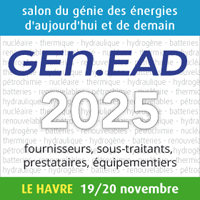fév.
17
2009 | Exxon Mobil Corporation Announces 2008 Reserves Replacement
Exxon Mobil Corporation announced today that additions to its proved reserves in 2008 totaled 1.5 billion oil-equivalent barrels, replacing 103 percent of production. Excluding the impact of asset sales, reserves additions replaced 110 percent of production. These additions assume the long-term pricing basis that the corporation uses to make its investment decisions, rather than single-day, year-end pricing.
“ExxonMobil continues to make quality reserves additions, and has replaced an average of 110 percent of production over the last 10 years,” said Rex W. Tillerson, chairman and chief executive officer. “This strong performance reflects our strategic focus on resource capture, a disciplined approach to investment and excellence in project execution."
"We take a long-term view of resource development and invest throughout the commodity price cycle. Adding new reserves ensures that ExxonMobil will continue to develop new supplies of energy that will be critical to help meet the world’s growing needs into the future."
The annual reporting of proved reserves is the product of the corporation’s long-standing, rigorous process that ensures consistency and management accountability in all reserve bookings.
The corporation’s reserve additions in 2008 reflect both new developments with significant funding commitments and revisions and extensions of existing fields resulting from drilling, studies and analysis of reservoir performance. Reserves additions from the Kearl Phase 1 oil sands project in Canada totaled 1.1 billion oil-equivalent barrels. Proved additions were also made in a diverse range of countries including the United States, Norway, Nigeria, Angola and Australia. Asset sales in 2008 reduced proved reserves by 0.1 billion oil-equivalent barrels.
Utilizing December 31 liquids and natural gas prices, proved reserves replacement was 2.0 billion oil-equivalent barrels in 2008, replacing 136 percent of production, including the effect of asset sales. However, prices from a single date are not considered when long-term investment decisions are made by the corporation, and annual variations in reserves based on such year-end prices are not aligned with how the business is actually managed.
Long-Term View
The long-term nature of the industry and the large size of the discrete projects that provide a significant portion of the corporation’s reserves additions make it appropriate to consider a time horizon longer than a single year. Excluding single day, year-end pricing effects, the corporation’s 10-year average reserves replacement ratio is 110 percent, with liquids replacement at 103 percent and gas at 119 percent. For the last 15 consecutive years our reserves additions have more than replaced production.
The reserves additions made during this period comprise a diverse range of resource types and have broad geographical representation. At the end of 2008 ExxonMobil’s proved reserves base increased to 22.8 billion oil-equivalent barrels, split approximately evenly between liquids and gas. ExxonMobil’s reserves life at current production rates is 15.3 years and the portion of proved reserves already developed is 62 percent.
Industry-Leading Resource Base
ExxonMobil added 2.2 billion oil-equivalent barrels to its resource base in 2008, with key additions from Canada, the onshore United States, deepwater Gulf of Mexico and West Africa. Overall, the corporation’s resource base grew by 0.3 billion oil-equivalent barrels to 72.4 billion oil-equivalent barrels, taking into account production, revisions to existing discoveries, and asset sales. This figure also includes the impact of increased government take, which reduced the resource base by 0.5 billion oil-equivalent barrels in 2008. The resource base includes proved and probable reserves, plus other discovered resources that are expected to be ultimately recovered.
Source : Communiqué EXXON MOBIL
Voir la fiche de l'entreprise EXXON MOBIL
| |
|
|






  
|